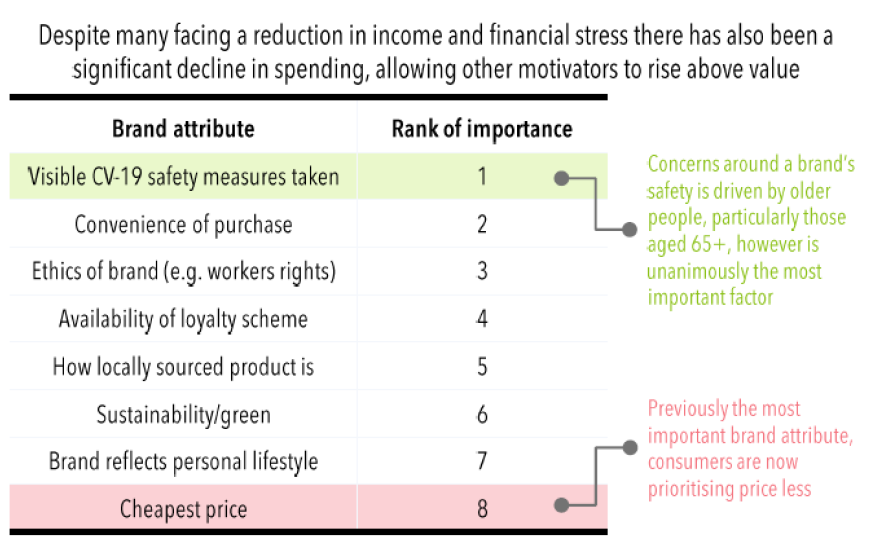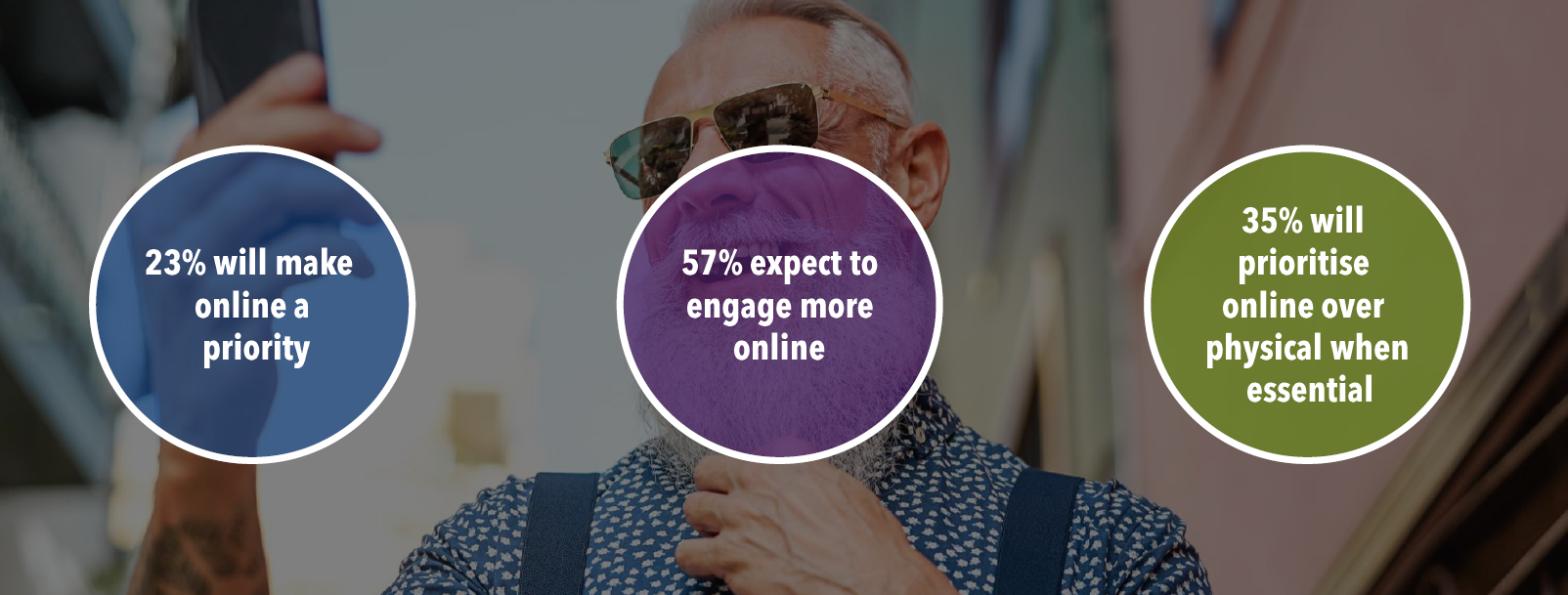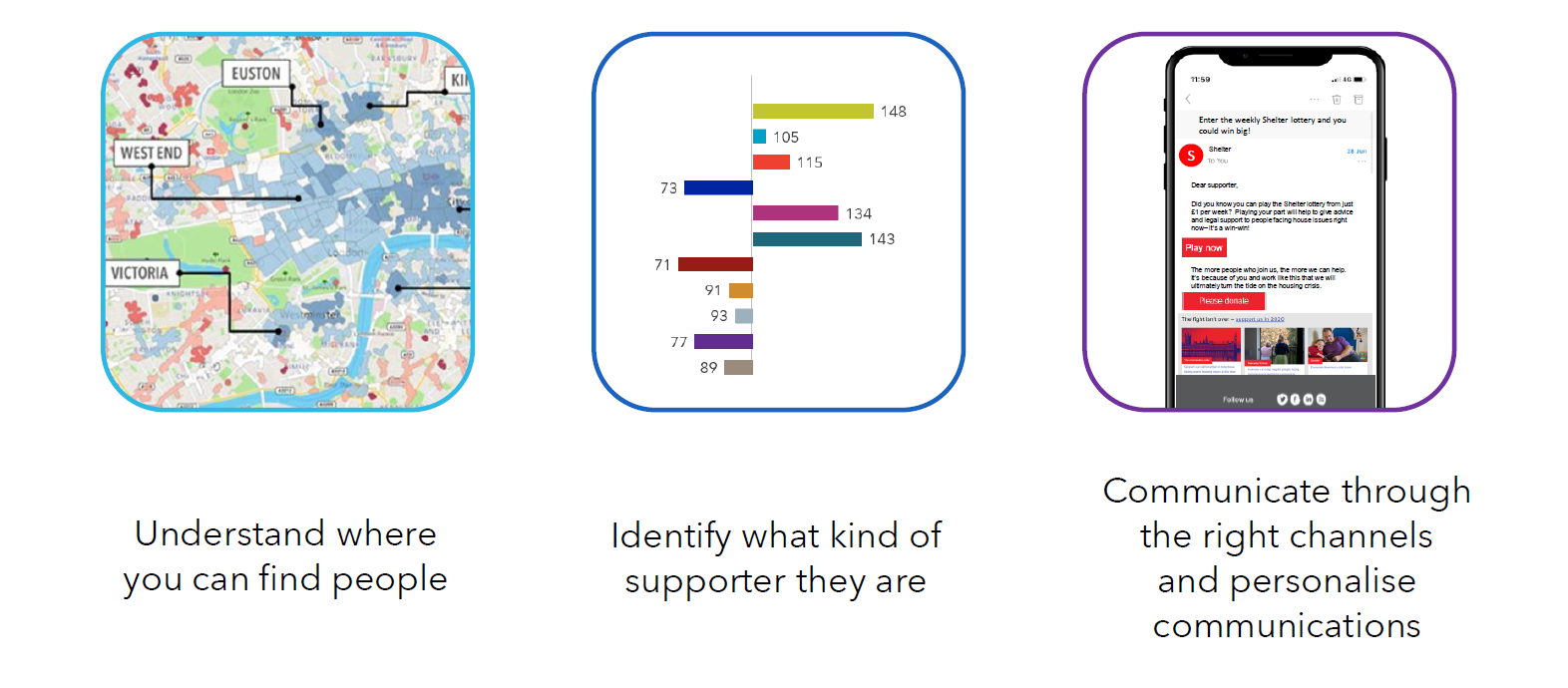Understanding new supporter behaviours
Covid has brought unprecedented changes to our day to day lives and our behaviour. This in turn is having a huge impact on the charity sector and their ability to fundraise, a vital part of their operations. Some of these key challenges that charities are facing currently are:
- Not being able to host fundraising events
- Loss of income from mass participation events
- Charity shops being closed
- Lower footfall on high streets and transport hubs
- Economic impacts on income
At CACI we have been exploring the impact of Covid on people’s behaviour and we took a look at what this meant for charities and how they can overcome these challenges.
CHANGED PRIORITIES
One of the more unusual impacts in people’s changed behaviour is the up-turn in their priorities when engaging with brands. Whilst Covid-19 safety measures have risen to be the number one priority, regardless of demographics, this was not the only change to the ranking. With a reduction in spending resulting from lockdown, two key aspects have risen to the fore in people’s priorities:
- Ethics of Brands
- Sustainability/Green

This is a key factor for charities as it shows that despite the hardships that many of the population is currently facing, there is a general desire to ensure money spent is done so with ethical and sustainable brands. This is particularly key for charities that have online stores as there is clearly an appetite for this kind of spending, so it is imperative to be reaching out to supporters with this message.
FINANCIAL SITUATIONS
Consideration of changes in income and financial status is imperative, but whilst Covid is having an impact on all, the effect of this is not the same across the board.
Using CACI’s Fresco segmentation, we have been able to look at survey respondents changed financial situations. The groups that are seeing an increased disposable income tend to be some of the younger segments that are early in their careers and have been able to successfully work from home. This is a key group to look at, as they aren’t the typical audience for charities to target as they usually have low levels of disposable income.
DIGITAL ADOPTERS
With face to face fundraising coming to an abrupt stop back in March, digital channels messaging for brand awareness and fundraising initiatives became a key strategy overnight. Since lockdown was imposed, we have seen that 53% of people are now expecting to engage more online. Breaking this down further, we can see that 23% will look to make online a priority going forwards, whereas 35% will only use online over physical when absolutely essential.

What is most important to consider in these statistics, is that it is older generations, typically adverse to using digital channels, that have now become more digitally savvy and more comfortable making payments online. As a key demographic for many charities, this is a key consideration in future fundraising strategy.
THE FUTURE OF FACE TO FACE FUNDRAISING
As restrictions have been eased and the tier system has been implemented, we have seen a rise in movement in the local community – whilst people are not moving in the same way that they were before lockdown, we can see that people are moving about and interacting more in their local community. This is key to consider when planning face to face fundraising strategies as the local high street is a more powerful location than before.

DISCUSSION
One of the key themes that was discussed is the importance in using data to understand what is changing in charity audiences. Whilst there have been some obvious changes with the loss of face to face fundraising and community events being cancelled or postponed, some of the changes in supporter behaviour are more subtle and being able to understand and react to these is crucial.
Some of the other key discussion points were:
- Many charities are seeing an increase in digital donations – it’s key to understand who these donors are an ensure their retention and more importantly to continue to engage them.
- Older donors are getting help from younger family members to donate online.
- Direct mail and DRTV are proving successful – people are responding to the needs of charities, but data is needed to understand who and why.
- Using value exchange and digital campaigns to attract a younger base of new supporters.
- At this point in the year, looking forwards is essential – what does a fundraising strategy look like in 2021 with the lingering effects of lockdown and the tier system in place?
- Improve online retail to recoup losses from retail spaces.
- Retention of donors will be key for stability moving forwards.
- Some charities have already started looking at younger demographics that have more disposable income than previously and engagement strategies here.
- An unexpected bonus is that Covid has given space for internal transformative changes to come about quickly – for example, removing the reliance on particular channels such as face to face.
WHAT’S NEXT?
If any of these points resonate, and if you’d like to understand more about how CACI can support your charity to overcome this challenging time through data, marketing technology and insight please do not hesitate to get in touch.
Look out for our next blog on how charities can find and support the new vulnerable.